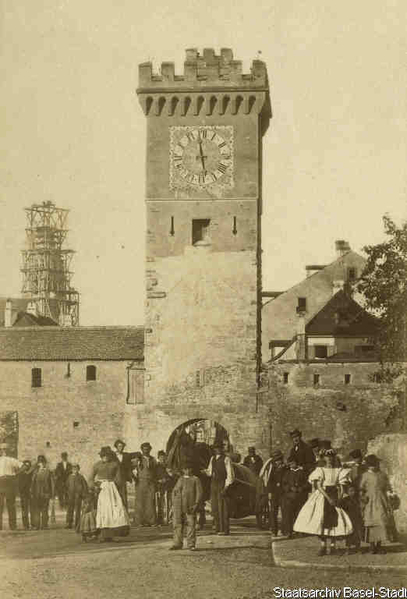 Hundreds of European cities were once surrounded by walls, sometimes several sets of them; in many all traces are gone, and in others the bits that remain after mostly 19th-century demolition are random.
Hundreds of European cities were once surrounded by walls, sometimes several sets of them; in many all traces are gone, and in others the bits that remain after mostly 19th-century demolition are random.
Like many others, Basel, Switzerland has picked a few choice bits as reminders of the city's history, and the course of the rest can be traced in the city streets that either replaced them, or ran along them.
At leftt, Baselers gather in 1864 to watch demolition of the Steinentor.
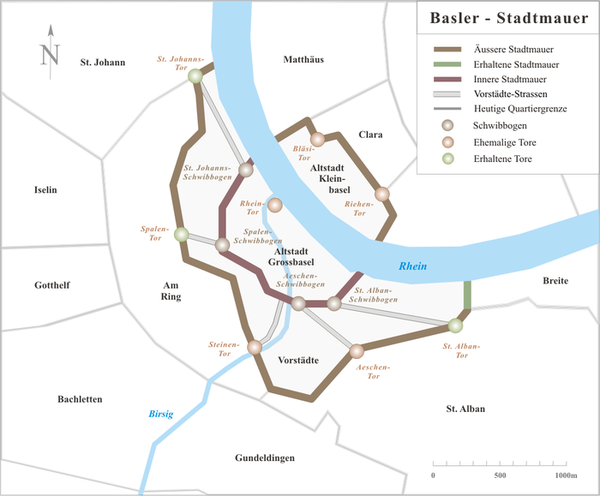
Basel's three big 'remainers' are three towers that were originally part of the city's 14th-century 'new' walls, built when the city began spreading out from its original core, and because an earthquake in 1356 damaged the 10th century walls. Because Basel has been split by the Rhine for a thousand years, its original wall, the smaller circle above, was in two parts; when new walls were built in the 1300s, the eastern side, "Little Basel" didn't get a new ring while "Big Basel" did.
I became aware of Basel's wall traces while walking the city over a three-week stay last summer; the Spalentor was my first discovery. Walking from the University Hospital to my lodging, I turned the corner, and there is was, apparently smack in the middle of the street, with a tram headed straight toward it. I soon found that the tram actually curves around the tower, rather than passing through it.
Pedestrians, however, are free to walk through the tower, which has been restored a number of times, most recently in 2012. It was made a protected landmark in 1933. As late as the 1860s, it was used as a customs post and guardhouse.
Inside, the pegs of its massive doors are a favorite roost for a flock of birds.
Near the eastern end of the walls, the St Albans Gate (Albanstor) stands in an area of parkland in a part of the city that seems in ways more outskirts than innter city. Just across the river from it is a tower of a very different kind, the home offices of Hoffman-La Roche, the big pharmaceutical company.
Two of the segments of wall and fortification torn down mid 19th century included both the Aeschenschwibbogen (upper) which was part of the older wall and the nearby Aeschentor, part of the new one. You'll notice that the frugal Baselers of the 10th century built onto their defenses more or less higgly-piggly, while the later towers and walls were generally separated from other buildings.
While there are bits and pieces in various parts of the city (remember all those buildings that attached themselves to the older walls) the only other major piece standing is the St Johann gate in the north of the city, and it is attached to the only significant remaining piece of actual wall and fortification.
The size of the doors and the thickness of the walls of the tower show how serious a job it was defending the city,especially on the river side.
The more decorative aspects were added later, as the building came to be used for other purposes over the centuries. Just behind the tower is a set of stairs leading to a park-like area at the second-floor level of the tower. While this has become a pleasant park, it is actually the top of the wall, where archers and lancers would be stationed to fend off attempts to cross or breach the wall.
At the end of the wall, there are observation points which not only give a variety of great views of Basel up and down the river but also make clear why this was a good point to place a tower—its commanding view of the river would have enabled artillery to repel invading ships or troops.
If I get back to Basel, or if you visit: following the map through the streets that mark the lines of the wall could make a great project, for history and beauty.

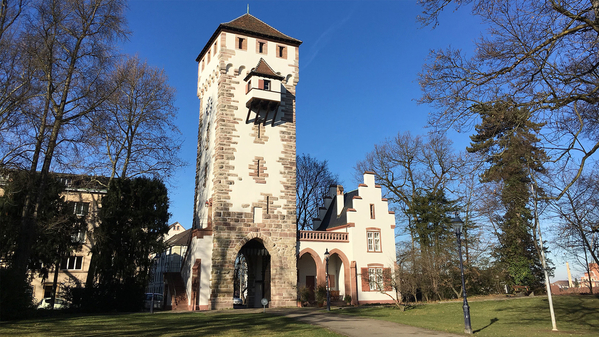
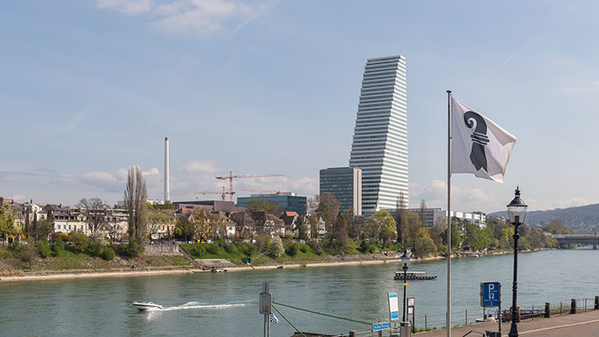
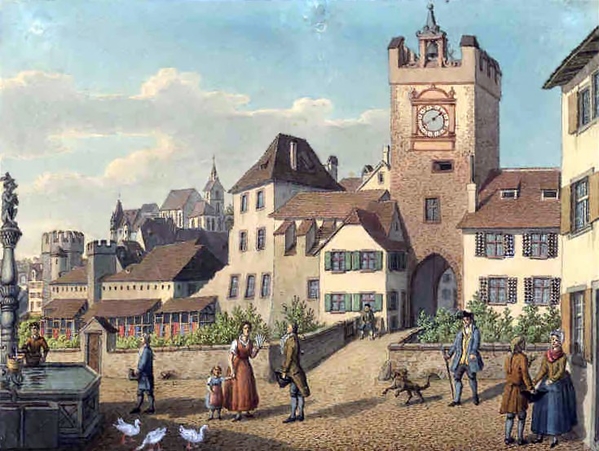
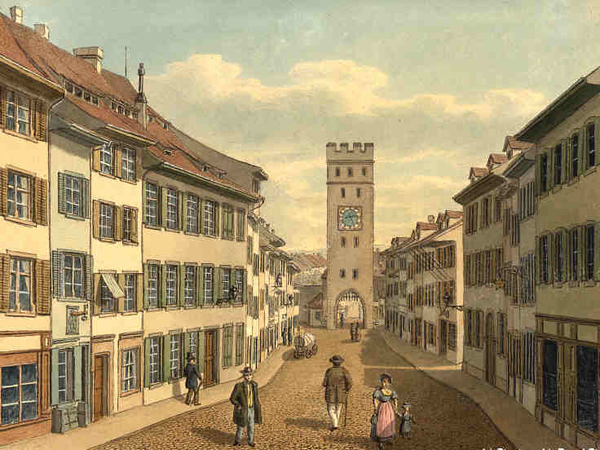






Comments (0)